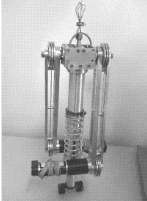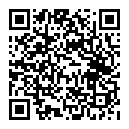- 说明
- 点击数:687
Windows 11 24H2存在一个可能会破坏你游戏的错误。这个错误可能会在某些配置上导致游戏颜色显示不对。但根据Windows Latest报告,这个问题甚至不仅限于游戏。
有小伙伴发现,除非关闭“自动管理应用的颜色”选项,否则Windows 11屏幕无法正确显示颜色。
在一份声明和对支持文档的更新中,微软确认了Windows 11 24H2的错误会导致在使用AutoHDR功能时游戏颜色显示不正确。
Auto HDR是Windows 11的一项新功能,它可以自动提升游戏的质量,尤其是颜色。这个功能本身是想通过自动将标准动态范围(SDR)内容转换为高动态范围(HDR)来增强游戏体验。
SDR代表标准动态范围,通常是默认视图,高动态范围(HDR)承诺更好的质量。
遗憾的是,Windows 11 24H2破坏了这个功能。它不仅导致游戏颜色不正确,还导致一些应用程序崩溃。
- 说明
- 点击数:1399
从事 IT 的经常要做一些 IT 实验,直接在宿主机上操作风险比较大,所以一般建个虚拟机,很多人喜欢安装 vmware workstation,其实 windows 10 以后就自带免费的虚拟软件,一些常见的快照功能(hyper-v叫检查点)和网络配置,hyper-v都有。而且相比 vmware workstation,有以下优势:
- 说明
- 点击数:6644
想象一下,如果你一次只能在你的计算机上运行一个软件会怎样。如果你想查看电子邮件,则必须关闭当前的程序。如果你想访问 Internet,则必须关闭 Word 文档或你当前正在使用的任何其他应用程序。看起来很有挑战性,对吧?
虽然我们认为一次运行大量应用程序的能力是“理所当然”,但我们很少考虑同时运行多个操作系统。值得庆幸的是,最佳虚拟机软件使在一台机器上并行使用多个操作系统变得更容易。尽管在一台物理机上运行两个或多个操作系统并不是一个新概念,但如果你是计算机新手,这里简要说明一下什么是虚拟机程序?
- 说明
- 点击数:1327
生活需要一些小巧实用的工具,它们能够在细节处为我们带来便捷。以下是八款简洁实用的工具,看看它们是否适合您的生活。
一、图片压缩工具 —— TinyPNG
TinyPNG是一款智能的图片压缩工具,可以减少WebP、PNG和JPEG图片的文件大小。通过有损压缩技术,TinyPNG可以选择性地减少图片中的颜色,从而减少存储数据所需的字节数。压缩效果几乎不影响图片质量,但可以显著减小文件大小。TinyPNG适用于压缩网站或应用中的图片,可以节省带宽和提升加载速度。
- 说明
- 点击数:2254
与倒立摆相似,单腿跳跃机器人是自然不稳定系统,在实际的规划与控制中,需要保证控制的实时性。这使得实时控制的研究显得至关重要。
Windows系统本身不是实时操作系统,但是,对于采用上/下位机模式(如PC+DSP)的控制系统,因为下位机的定时精度高且响应快,通过合理的设计,同样可以保证整个控制系统的实时性。
针对单腿跳跃机器人控制的要求,重点研究了实时控制技术,并给出具体控制方案。在联机调试之前,先设计实验验证该控制方案的可行。实验结果说明控制系统的实时性能满足设计要求。
1、 机器人控制系统的搭建
本文所研究的是一种新型弹性单腿机器人,该机器人采用双臂驱动,弹性伸缩腿中不安装驱动部件,系统依靠内部动力学耦合实现动态站立平衡、起跳和稳定连续跳跃。其机械本体如图1所示。

© 2025 VxWorks Club

